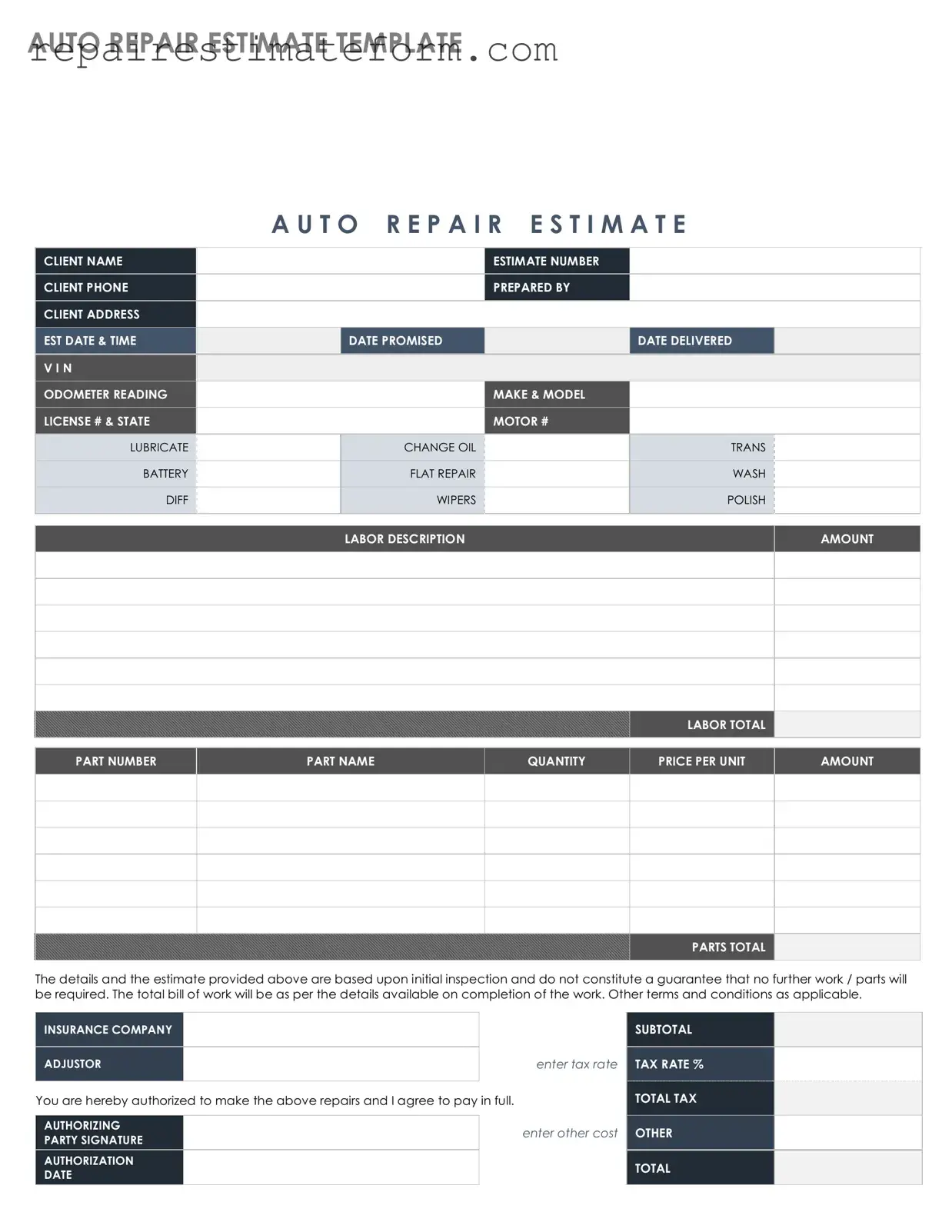Misconceptions
Many people have misunderstandings about the Auto Repair Estimate form. It's important to clarify these misconceptions to ensure a smooth repair process. Here are ten common misconceptions:
- The estimate is the final price. Many believe that the amount listed in the estimate is what they will pay. In reality, the final cost may vary based on additional repairs or parts needed.
- All estimates are the same. Not all auto repair shops use the same pricing or methods. Estimates can differ significantly based on the shop's labor rates and parts sourcing.
- The estimate includes taxes and fees. Some people assume that the estimate covers all additional costs. Often, taxes and environmental fees are added later.
- You must approve every line item in the estimate. While it's good to understand the details, you don't need to approve every single part listed. Approval is usually required for major repairs.
- The estimate is legally binding. An estimate is not a contract. It is an approximation of costs and can change based on the work performed.
- You can’t negotiate the estimate. Many think the estimate is set in stone. However, discussing the estimate with the shop can lead to adjustments.
- All repairs will be done immediately. Some believe that once they receive an estimate, repairs will start right away. Scheduling and parts availability can affect timelines.
- The estimate is only for repairs. Some think estimates only cover repairs. However, they can also include diagnostics and inspections.
- The estimate guarantees quality of work. An estimate does not guarantee that the work will be done to a specific quality. It's essential to choose a reputable shop.
- You don’t need to keep the estimate. Many people discard the estimate after approval. Keeping it can be important for future reference or warranty claims.
Understanding these misconceptions can help you navigate the auto repair process more effectively. Always communicate with your repair shop and ask questions if you're unsure about anything.
